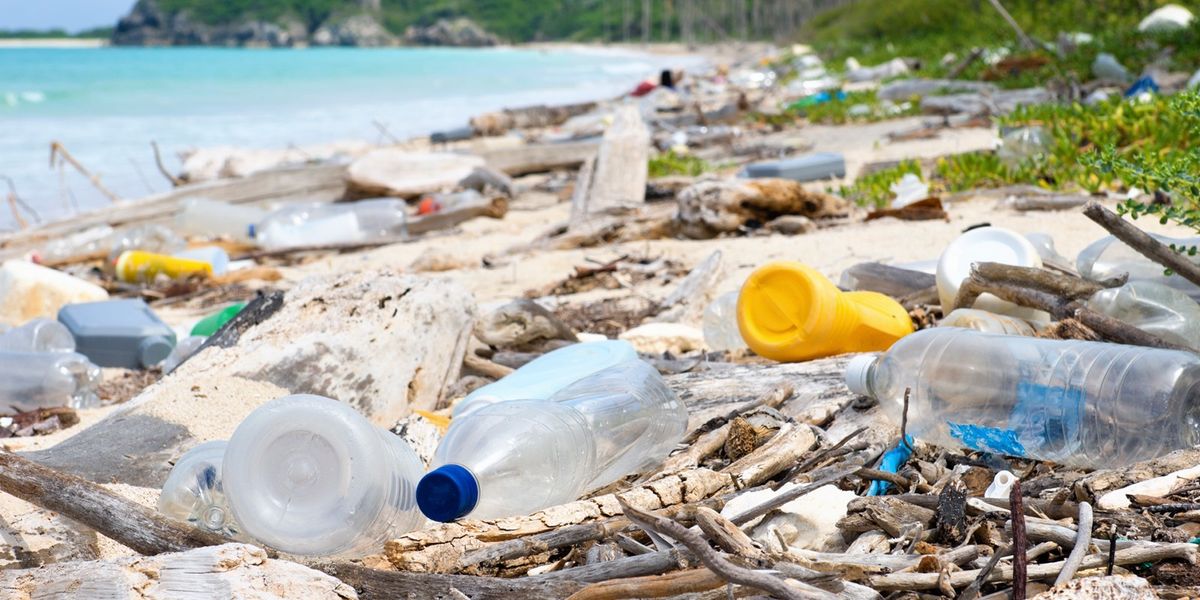Plastic pollution is more than just a waste management concern; it is a global environmental crisis that threatens the Earth’s systems. Patricia Villarrubia-Gómez of the Stockholm Resilience Centre recently researched how plastics contribute to the shattering of all nine planetary boundaries. The report employs the planetary boundaries framework to show accumulating evidence of plastics’ long-term effects on the environment, human health, and overall well-being.
Plastics: A Global Environmental Hazard
Plastics have long been seen as inert and harmless, making contemporary life easier and products more secure. However, they are far from harmless. Many of these molecules, including endocrine disruptors and “forever chemicals,” are harmful to ecosystems and human health. “Plastics are more than just waste; they are chemical-laden materials that affect us on a daily basis,” says Villarrubia-Gómez.
More than 500 million tons of plastic are manufactured each year, but only 9% is recycled globally. Plastics can be found anywhere, from the summit of Mount Everest to the Mariana Trench, and they have an impact on both isolated ecosystems and metropolitan surroundings. This widespread use emphasizes plastics’ involvement in increasing climate change, biodiversity loss, ocean acidification, and freshwater and land use challenges.
Rethinking Plastics Throughout Their Lifecycle
The study underlines the need to address plastics throughout their full life cycle, from raw material extraction to production, use, and eventual disposal into the environment. This comprehensive approach contradicts conventional narratives that concentrate primarily on trash management.
Raw Material Extraction and Production
Plastics begin as fossil fuels, therefore their manufacture is inextricably related to climate change. The extraction and refining operations contribute to greenhouse gas emissions while depleting finite natural resources. Furthermore, insufficient data on the methodology and assumptions employed in plastics manufacturing impedes efforts to correctly measure their impact.
Use and Release into the Environment
Plastics are employed in almost every industry, generating microplastics and hazardous substances during their lifetime. These materials contaminate ecosystems, altering food chains and jeopardizing species’ existence. According to studies, plastics are consumed by both marine life and humans, potentially having long-term health implications.
Earth System Effects
Once discharged, plastics have an impact on crucial Earth-system processes. They pollute soil and water, prevent natural carbon sequestration in seas, and create physical barriers for species. These effects are exacerbated by cumulative interactions with additional environmental stressors.
The Planetary Boundaries Framework
The planetary boundaries framework classifies humanity’s safe operating space into nine important Earth system processes. This study reveals how plastics affect all of these boundaries, either directly or indirectly, disrupting the planet. For example:
- Climate Change: Plastic production and incineration emit considerable volumes of CO₂ and other greenhouse gases.
- Biodiversity Loss: Plastics pollute ecosystems, entangle wildlife, and alter habitats.
- Ocean acidification: Microplastics in the oceans disrupt marine ecosystems, hurting organisms that are crucial to pH equilibrium.
- Freshwater and Land Use: Plastic trash pollutes freshwater sources and clogs landfills, reducing land availability for agriculture and biodiversity.
Co-author Sarah Cornell emphasizes that treating plastics under this paradigm exposes their interrelated and systemic effects.
Control Variables for Plastic Management
The researchers propose employing a set of control variables to monitor and reduce plastic pollution. This multifaceted approach evaluates implications at three major stages: raw material extraction, manufacturing and usage, and environmental release. Rather than pursuing a single threshold for plastics’ effects, the study recommends a comprehensive review throughout different stages in order to properly control hazards.
Transparent and standardized statistics on plastic production and consumption are essential for executing this system. Currently, poor standards and a lack of methodological clarity prevent effective aggregation and uncertainty evaluations, restricting both research and policy responses.
A Wake-up Call for Policy and Public Perception
For decades, public discourse and policy have treated plastic pollution as a trash issue. This narrow perspective does not take into consideration the material’s total environmental impact. “Plastics are not inert materials that can be easily cleaned up. Their effects start with creation and last throughout their entire cycle,” emphasizes Villarrubia-Gómez.
As international discussions for the Plastics Treaty near its conclusion, experts advocate for a paradigm shift. Policymakers must manage material flows holistically, taking into account the consequences of plastics on the Earth’s systems. This shift could allow for prompt discovery, attribution, and mitigation of their effects.
A Complex and Broad Problem
Plastics have reached every corner of the planet and even into human bodies. Their chemical composition and life cycle complexity make them a one-of-a-kind and serious environmental challenge. “The solutions we develop must address this complexity to ensure safety and sustainability for both people and the planet,” adds co-author Bethanie Carney Almroth of the University of Gothenburg.
The study emphasizes that the plastics problem is inextricably linked with climate change, biodiversity loss, and resource depletion. Viewing plastic pollution as part of a bigger global challenge can help guide more coordinated and effective approaches.
A Call to Action
The study emphasizes the urgent need for worldwide action to address plastic pollution. Plastics can be incorporated into the planetary limits framework to help governments, industry, and individuals better understand their impacts and develop mitigation solutions.
Villarrubia-Gómez and her team promote a comprehensive approach that highlights the importance of combating plastic pollution in order to protect Earth’s systems. Only by taking into account the entire life cycle of plastics and their cumulative effects can we hope to steer towards a more sustainable future.

